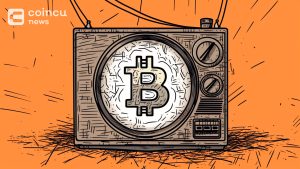What Is The Bitcoin Ordinals? Things To Discover About Bitcoin NFT
The emergence of the Bitcoin Ordinals has caused users to start “rushing” to use Bitcoin to create NFTs. In April 2023 alone, the daily record for inscriptions using Ordinals was broken four times as users flooded the network with images, video games, and other content.
With the explosion of the BRC-20 concept, the total market value of related Tokens has reached new highs, and it has also fueled the growth of the Bitcoin NFT ecosystem. Dune data shows that the number of Ordinals records has exceeded 5,508 million, and the total fees generated to date have exceeded 1,148 bitcoins. So what are orders? Why did it become a historic milestone for Bitcoin NFT?
What is Bitcoin Ordinals?
The Ordinals protocol is a satoshi numbering system that gives each satoshi a serial number and keeps track of them in transactions. Simply put, order allows users to create individual satoshis by attaching additional data to them. This process is called “inscription”.
A satoshi – named after Bitcoin’s creator nicknamed Satoshi Nakamoto – is the smallest denomination of Bitcoin (BTC). One BTC can be broken down into 100,000,000 satoshis, meaning each satoshi is worth 0.00000001 BTC.
Satoshis are numbered based on the order in which they are mined and delivered. The numbering scheme is based on the order in which satoshi are mined, while the assignment scheme is based on the order of the input and output of the transaction. Hence the name “ordinals”.
While traditional NFTs are similar to ordinals in some ways, there are a few key differences. NFTs have typically been made using smart contracts on blockchains such as Ethereum, Solana, and the BNB Smart Chain, and sometimes, the assets they represent are hosted elsewhere. So, orders are inscribed directly onto individual satoshis, which are then included in blocks on the Bitcoin blockchain. Ordinals reside fully on the blockchain and do not require a sidechain or separate token. In this sense, ordinal inscriptions inherit the simplicity, immutability, security, and durability of Bitcoin itself.
Why was Bitcoin Ordinals born?
Since its inception on January 3, 2009, the only application of Bitcoin is still just a store of value. Although Bitcoin still does its job very well, the revolutionaries don’t want to stop there, they want the Bitcoin network to be busier, with more applications. With such ideals in mind, a software engineer named Casey Rodarmor created the Bitcoin Ordinals, which allows users to mint NFTs on the Bitcoin network.
Currently, Bitcoin is still the hegemon of the crypto market with the leading market capitalization. However, in contrast to that, the Bitcoin ecosystem could be more forward compared to other major competitors such as Ethereum, Solana, etc.
This is explained by Bitcoin’s limitation in the implementation of Smart Contracts, resulting in few decentralized applications (DApps) that can be built on Bitcoin.
Therefore, instead of developing on Bitcoin, most decentralized applications related to DeFi or NFT are developed on platforms other than Bitcoin, such as Ethereum, Solana, Polygon.
This is what makes the Bitcoin ecosystem very outdated and is currently in need of a new solution that can bring a “new breeze” to Bitcoin.
Bitcoin NFT tied to Ordinals Protocol
Thanks to the arrival of the SegWit 2017 upgrade, Taproot 2021 is the perfect stepping stone for the birth of Bitcoin NFT, especially the Tapscript proposal (BIP342) included in the Taproot upgrade allows transactions to be carried out according to specified instructions. The Ordinals founder took advantage of this to attach NFT credentials to the transaction to create Bitcoin NFT.
After each Bitcoin transaction, a UTXO (Unspent Transaction Output) will be generated – it is like a certificate that certifies your balance and is stored on the Bitcoin network.
Ordinals protocol allows attaching your NFT (Inscription) information to UTXOs, aka NFT etching into Bitcoin. Of course the data “inscription” has been encrypted into a string form before. In other words, Ordinals engrave NFT on your balance certificate.
The smallest unit of Bitcoin is Satoshi (1 BTC = 100,000,000 sats), so the smallest amount of BTC that can be stored and transacted is 1 sats, corresponding to that 1 BTC will generate at most 100,000,000 NFT. The Ordinals protocol allows tracking individual sats and engraving NFT information on it. These Bitcoin NFTs are stored entirely on-chain on the Bitcoin network and can be transferred through Ordinals.
Effect of Bitcoin Ordinals on Bitcoin
The following are the benefits that Bitcoin Ordinals has brought, as well as its accompanying concerns:
Benefit
Inflow of BTC: Bitcoin Ordinals helps to increase the flow of money to Bitcoin and its network coins. Typically, the STX coin (Stacks) has increased x3 since Ordinals was born.
Vibrant ecosystem, increased trading volume: Bitcoin Ordinals has created a wave of NFT transactions on Bitcoin, thereby pushing the trading volume on this system to new heights.
Miners benefit: Bitcoin Ordinals has attracted new users as well as new transactions for Bitcoin, thereby helping miners to reap new profits.
Increasing the application of Bitcoin: So far, the biggest application of Bitcoin is only in the payment segment. With Bitcoin Ordinals, the applicability of Bitcoin has increased significantly.
Fear
Bitcoin Transaction Fees Increase: As transaction volume spikes, transaction fees on Bitcoin also increase. However, currently, fees on Bitcoin have not increased significantly.
Transaction speed may decrease: When the number of new users grows suddenly and Bitcoin has not expanded in time to meet, the transaction speed may be affected.
Data volume on Bitcoin will be heavier: The size of each block on BTC will spike because it has to contain a large amount of image encryption data. From there, the ability to process Bitcoin transactions will be affected.
Creating a Value Asymmetry for Satoshi: Previously satoshis were of equal value. Now with Bitcoin Ordinals, rare NFT-linked satoshis will likely cost more than regular satoshis. However, this is still only a concern and has not seen any significant impact.
Investment Potential of Bitcoin NFT from Ordinals
Thanks to the birth of Bitcoin Ordinals, Bitcoin NFT has received a lot of attention and money flow from the community. Many people have been racing to bid on these new NFT sets, causing the price floor of many sets to increase exponentially.
However, like every time a new Layer 1 Layer 2 ecosystem is born, the NFT on that system will attract cash flow for a while and then it will calm down. Therefore, you should always consider carefully before deciding to invest.
Although Ordinals has attracted a lot of attention and won the support of many big names in recent times, there are still many difficulties to be solved. Every innovation is met with mixed opinions, Ordinals is just the beginning, the future we can expect an explosion of the protocol and Bitcoin NFT.
DISCLAIMER: The information on this website is provided as general market commentary and does not constitute investment advice. We encourage you to do your research before investing.
Join us to keep track of news: https://linktr.ee/coincu
Foxy
Coincu News























